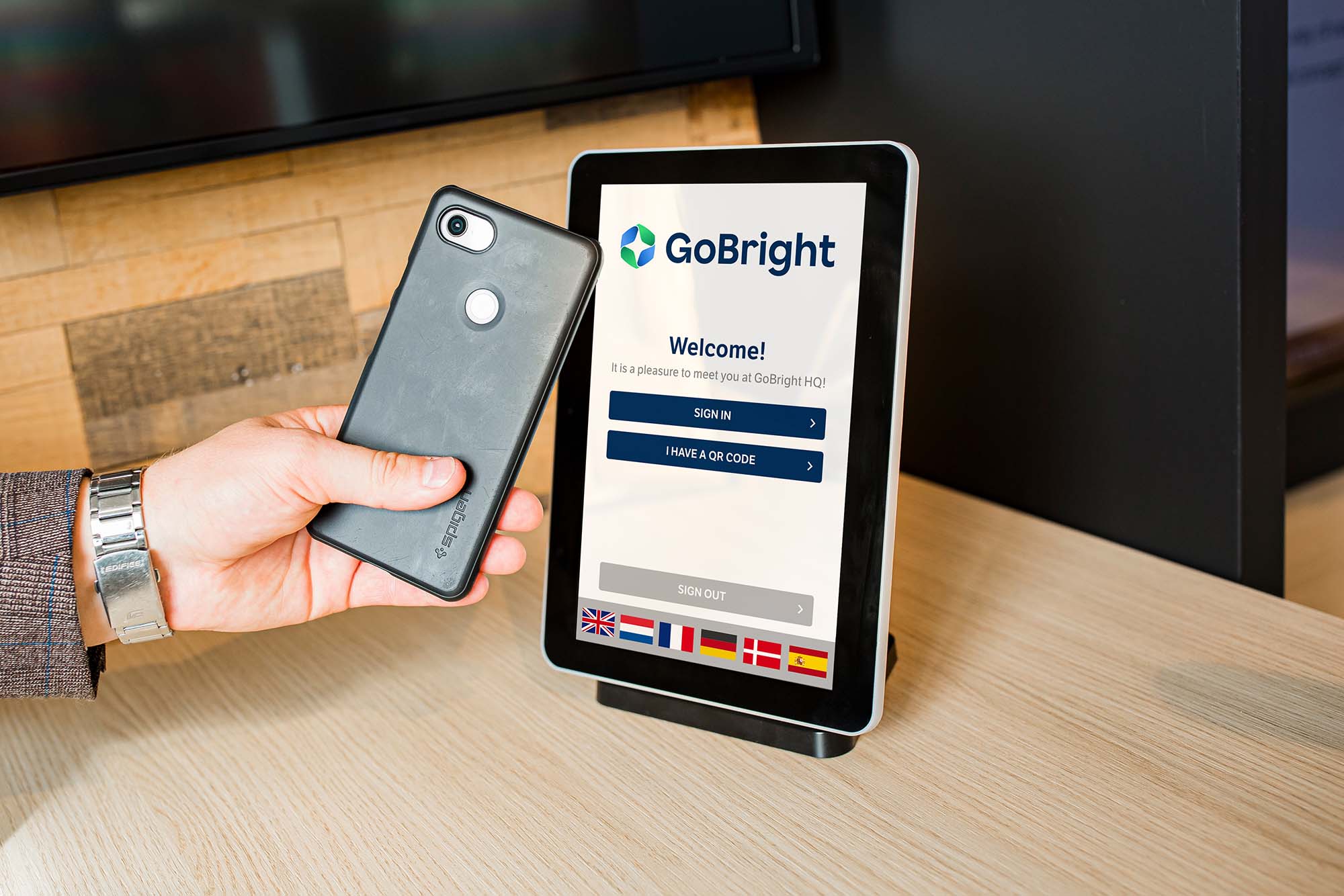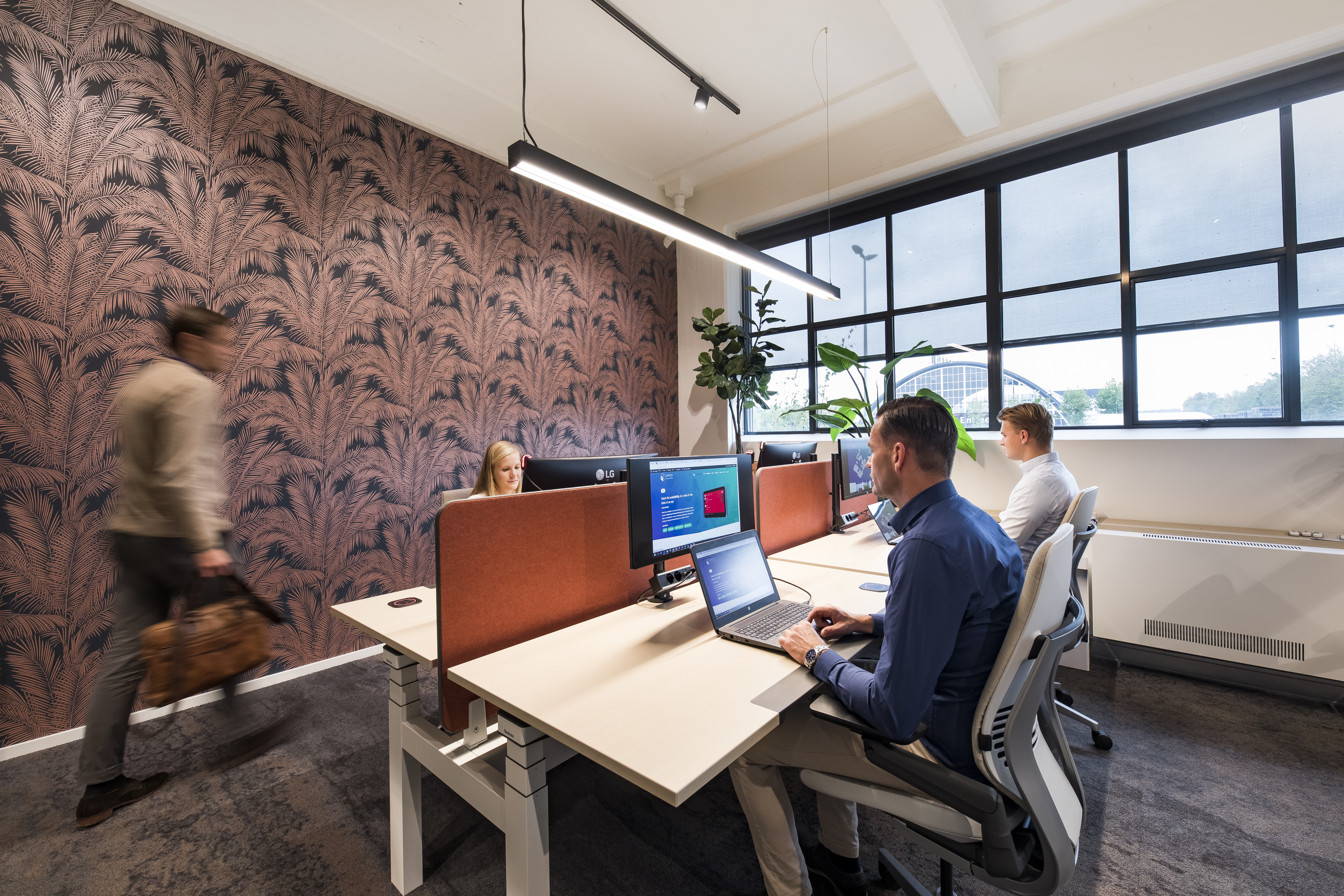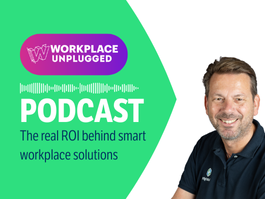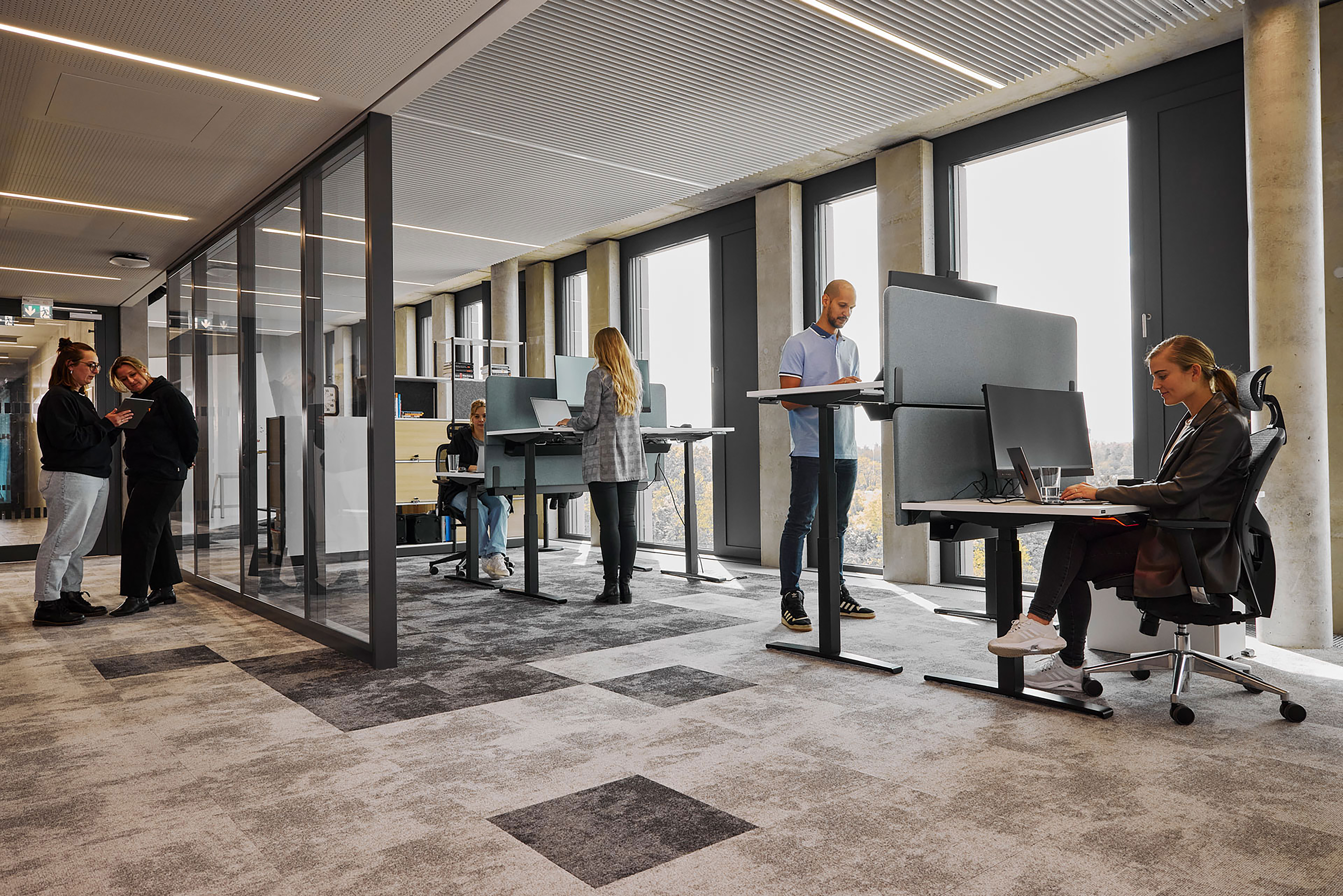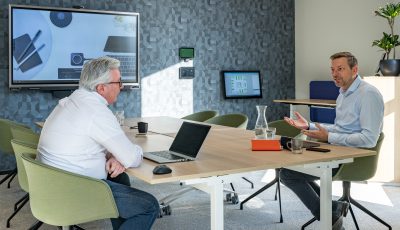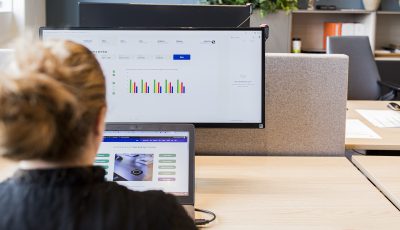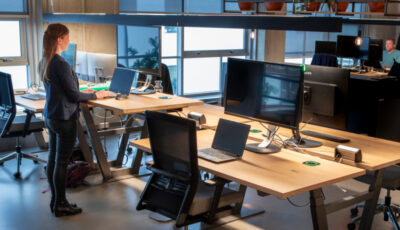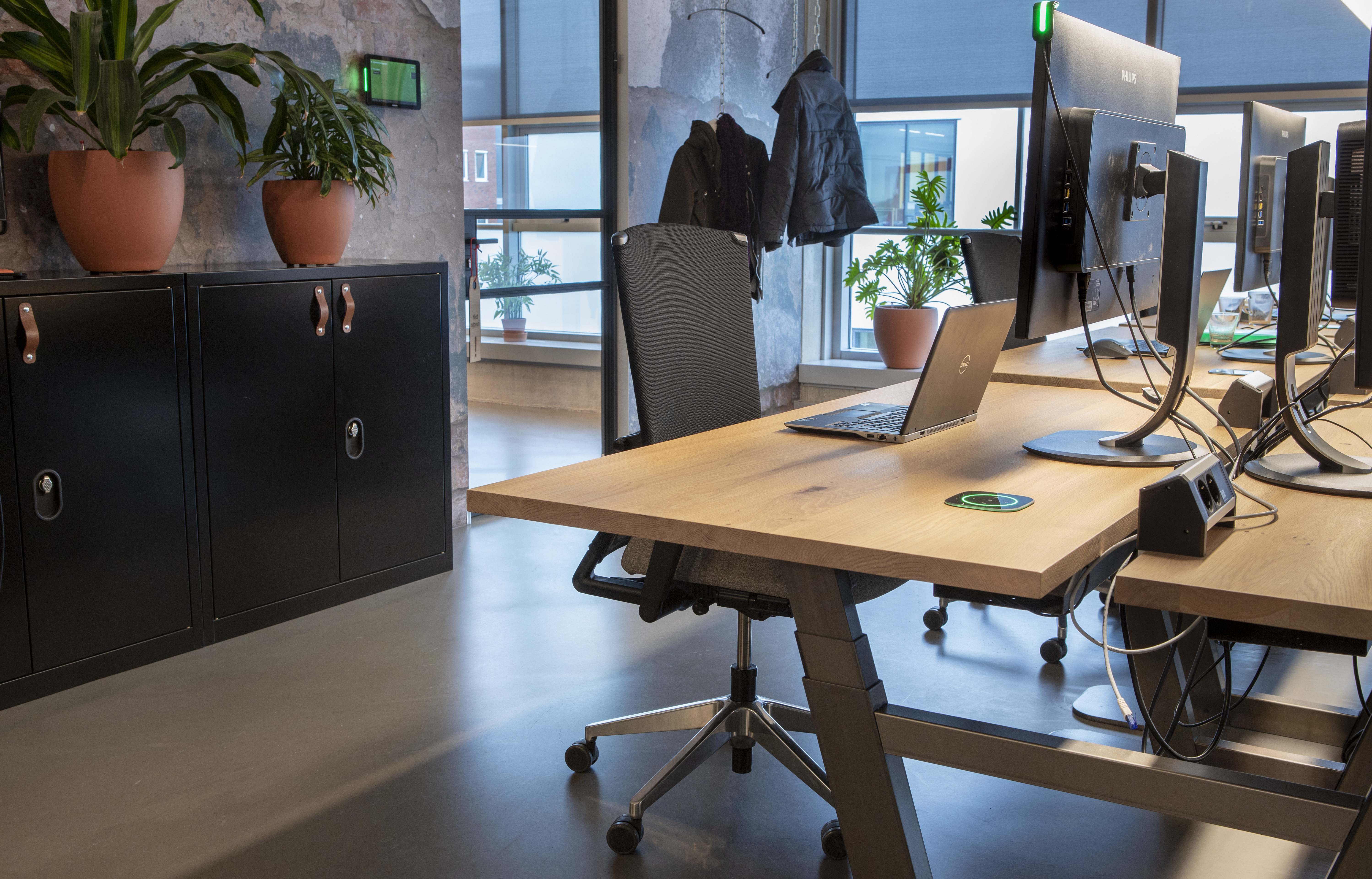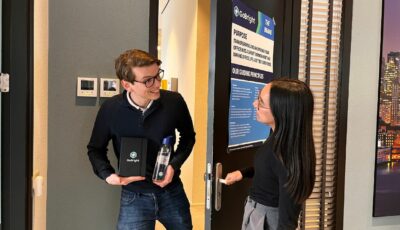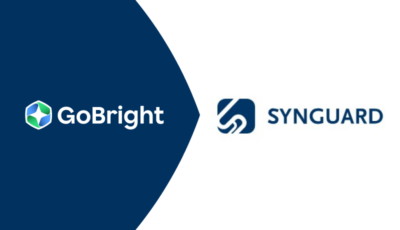Hot desking is a strategy that helps companies optimise their office space. This approach allows employees to use available desks on a first-come, first-served basis, eliminating the need for assigned desks and maximising office space usage. This works especially well in flexible work models, offering organisations the flexibility to accommodate dynamic working.
With smart solutions like GoBright, organisations can manage their workspace more effectively, gain valuable insights into desk occupancy and ensuring better resource management. This not only saves on costs such as rent and energy but also improves collaboration, employees from different departments are encouraged to work together in shared spaces.
The benefits of hot desking
Optimal use of space
Our research indicates that traditional office spaces have an occupancy rate of just 30% to 50%. This means that half of the office space is unutilised. Hot desking tackles this inefficiency, allowing organisations to make better use of available square footage. By using smart workplace solutions, organisations gain valuable insights into space occupancy, leading to smarter resource management and a more productive office environment.
The ability to track and optimise office space also plays a significant role in reducing environmental impact, as it leads to reduced energy consumption and less waste in the workplace. In an age where sustainability is becoming increasingly important, optimising your office space is one way to demonstrate your organisation’s commitment to the environment while reducing cost.
Cost savings
With fewer permanent desks and more efficient space usage, organisations can significantly reduce office-related expenses, such as rent and energy bills. By adopting a hot desking approach, companies can operate from a smaller office footprint without compromising on team collaboration or overall productivity.
In addition to reducing rent and energy costs, hot desking also lowers operational costs. For example, organisations can streamline their maintenance services, including cleaning and supplies, as the need to stock desks with paper, pens, or other materials is eliminated. A shared workspace system, where resources are centralised and effectively managed, also reduces unnecessary overhead.
Improved collaboration and innovation
Hot desking naturally encourages employees to interact with colleagues from different departments, fostering greater knowledge exchange and teamwork. When employees are not tied to the same desk every day, they are more likely to connect with others, sparking new ideas, enhancing creativity, and driving innovation within the organisation.
This spontaneous collaboration is an essential factor for innovation in today’s workplace. By breaking down silos and creating diverse, fluid teams, hot desking empowers employees to share ideas freely and make decisions that drive the company forward.
Moreover, as employees change desks, they’re exposed to new viewpoints and working styles. This creates a culture where cross-functional collaboration and creativity are the norm, leading to fresh ideas, faster problem-solving, and an overall stronger team dynamic.
More efficient facility management
Implementing a comprehensive workspace management system like GoBright’s Visitor Management System provides real-time data on desk occupancy, allowing facility managers to fine-tune their processes. This insight helps optimise office cleaning schedules, reduce energy consumption, and improve long-term office planning. With access to analytics, managers can make data-driven decisions to improve overall facility efficiency.
Facility management becomes significantly more proactive rather than reactive. For example, by understanding peak usage times, organisations can schedule maintenance work or office reconfigurations during off-peak hours, ensuring minimal disruption. It allows for smarter investments in office design, ensuring the space is configured in a way that supports both collaboration and individual productivity.
Supporting flexible working
The rise of flexible work means that many employees now split their time between working from home and the office. Hot desking supports this model by offering employees the ability to book desks according to their needs. With GoBright’s Desk Booking system, employees can easily book their workspace, making the transition between home and office smooth, while maintaining a productive and flexible work environment.
This model ensures that employees don’t need to be physically present in the office every day but can still benefit from the social and collaborative advantages that come with being on-site. This flexibility in work arrangements not only boosts employee satisfaction but also supports retention, as it demonstrates the organisation’s commitment to a balanced and employee-centric work culture.
How to implement hot desking successfully?
Choose the right technology
The foundation of a successful hot desking implementation lies in the technology you choose. GoBright’s Desk Booking system ensures that employees can easily find and book available workspaces. For facility managers and IT teams, the platform provides essential data on how the space is being used, which in turn helps with smarter office space management.
It’s crucial to choose a solution that is easy for employees to use and integrates well with existing office systems. Employees should be able to book desks quickly through a mobile app or desktop interface, with the ability to check for availability and book on-demand. Technology should empower users to make their own decisions without creating unnecessary complexity or frustration.
Establish clear guidelines
While flexibility is a key advantage of hot desking, success comes from clear and effective communication. Employees need to know how the hot desking system works, how to book a desk, and where to find necessary equipment such as monitors and chairs. Ensure there are clear guidelines in place so that everyone is aligned and can make the most of the new system.
Set clear expectations on etiquette as well, such as whether it’s acceptable to leave personal items at a desk for the day or if desks need to be kept completely clear. Clear policies will prevent misunderstandings and ensure that everyone has a pleasant and productive experience.
Encourage a culture of flexibility
For hot desking to thrive, employees must embrace a flexible mindset. HR managers can play an integral role in guiding employees through this transition, helping them adjust to the flexibility that hot desking offers. Fostering an open and adaptable culture will encourage employees to take full advantage of the benefits of this system.
Managers can encourage this cultural shift by leading by example, making flexibility the standard rather than the exception. In some cases, this could mean offering additional training or workshops on adapting to the new workplace structure or providing opportunities for team-building and cross-departmental collaboration.
Facilitate ergonomic and productive workspaces
Although employees may not have a permanent desk, the quality of their workspace is just as important. Invest in ergonomic desks and chairs, and ensure that employees have access to secure lockers for personal belongings. By providing comfortable, functional workspaces, you can improve productivity and employee well-being while maintaining flexibility.
Ergonomic furniture plays a key role in ensuring employees remain comfortable and productive throughout their day. Offering features like height-adjustable desks, quality chairs, and easy access to power outlets can help make the workspace conducive to longer working hours, reducing the risk of fatigue or injury.
Monitor, evaluate, and optimise
Hot desking is not a one-size-fits-all solution. Once implemented, it’s crucial to regularly monitor desk occupancy rates and employee satisfaction to identify areas for improvement. GoBright’s analytics tools offer a real-time view of how your space is being utilised, enabling you to optimise your approach based on data. These insights will allow you to refine your hot desking strategy, ensuring that the system continues to deliver maximum benefits.
Data should be reviewed frequently to ensure the implementation is meeting the organisation’s needs and goals. Adjustments can be made to booking procedures, office layouts, or even the technology platform based on feedback and data analysis. Continuous improvement will ensure the strategy remains effective over time.
Is hot desking the right fit for your organisation?
Hot desking is a powerful solution for modern organisations looking to optimise space, reduce costs, and support flexible working models. Whether you’re in local government, legal, finance, utilities, or education, the right desk booking system, like GoBright, can transform your workspace strategy.
By adopting the right technology and implementing strategic approaches, organisations can build more dynamic, collaborative, and cost-effective work environments. Hot desking isn’t just about saving space, it’s about creating an office that supports the way people work today and in the future.
If you’re ready to improve your workspace? GoBright offers innovative, adaptive solutions to seamlessly implement hot desking and unlock the full potential of your office. Curious about how GoBright can help optimise your workspace? Get a free expert consult and lets find the right solution for you.

